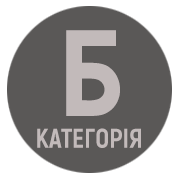Methodology of content learning of a foreign language in the context of reforming language and literature education
DOI:
https://doi.org/10.32782/2617-3921.2024.26.360-368Keywords:
CLIL methodology, content learning, communication, cognition, culture, analytical thinkingAbstract
The relevance of the implementation of the content learning methodology (CLIL) in the practice of teaching foreign languages is considered in the article. How expedient it is to use educational material from various subjects, in particular foreign literature, in the methodology of teaching foreign languages is proven. The integration of linguistic and literary subjects allows to deepen knowledge, form subject competences, and develop the cognitive abilities of pupils and students. The CLIL methodology is spreading in Ukrainian educational institutions regarding to grant programs with European partners, but it has not become widespread in Ukraine yet. The history of the methodology of content learning of foreign languages, its main differences from traditional methods, as well as the latest evaluations of the implementation of CLIL in secondary and higher education is highlighted in the article Prospective directions for the development of implementation and research on the results of the implementation of the methodology of content learning foreign languages in world educational practice are evaluated in accordance with modern challenges Attention is drawn to the main problems of the methodology, that relate to specific methodical techniques for the implementation of content training, the transparency of the coverage of results, etc. Scientists emphasize the further improvement of linguistic, methodological and organizational principles for the implementation of CLIL methodology in secondary and higher education, as there are significant differences in CLIL contexts and CLIL implementation, depending on the socio-cultural conditions and educational policies of the countries involved. Based on the material of the literary discipline «Literary masterpieces of the countries of Europe, America, Asia» it offers specific methods of using literary and cultural content, which contributes to the formation of moral and value, communicative competences. A method of in-depth perception of a literary text is proposed, which allows taking into account the reader’s feelings (sensual reaction), cognitive analysis (analysis of the construction of the work, development of plot lines), as well as the actualization of moral values embedded in a literary work or literature of a certain time, of a certain national literature during bilingual integration.
References
Йонеско Е. Голомоза співачка. Антип’єса [переклад з фр. В. Діброва]. Всесвіт. 1988. № 10. С. 126–144.
Руднік Ю.В. Впровадження методики предметно-мовного інтегрованого навчання: за і проти (світовий досвід). Вища освіта України у контексті інтеграції до європейського освітнього простору. 2013. № 46 (31). С. 332–340.
Сальник І.В. Підготовка англомовного вчителя фізики: проблеми інтеграції фахового і мовного навчання. Збірник наукових праць Кам’янець-Подільського національного університету імені Івана Огієнка. Серія педагогічна. Вип. 24. Кам’янець-Подільськ. 2018. С. 30–32.
Ткаля І. А., Черкашина Н. І., Огнівенко З. Г. CLIL як глобальна тенденція сучасної світової педагогіки. Проблеми сучасної освіти. 2020. 11. С. 59–62.
Bruton, A. (2013). CLIL: Some of the reasons why ... and why not. Hüttner, & U. Smit. System 41: Р. 587–597.
Coyle, D. (2010). CLIL: Content and Language Integrated Learning. Cambridge University Press. P. 182–184.
Graddol, D. (2006). English Next, Why global English may mean the end of English as a Foreign Language. London: British Council Publications, 128 р.
Marsh, D. (2002). Evropejskoe ismerenie: dejstvija, tendencii I perspective [the European Dimension: Actions, Trends and Foresights Potential]. Brussels: The European Union. URL : http://userpage.fu-berlin.de/elc/bulletin/9/en/marsh.html.
Pérez Cañado, M.L. (2016). From the CLIL craze to the CLIL conundrum: Addressing the current CLIL controversy. Bellaterra Journal of Teaching & Learning Language & Literature. Vol. 9(1), Feb-Mar. Р. 9–31.
Vonnegut K. Bagombo Snuff Box. Uncollected Short Fiction. GP Putnam's Sons., 1999. 295 p.
Xabier San, І. (2019). The Multi-faceted Effects of CLIL: Review. Nexus Aedean Journal (1). June. Р. 33–49. URL : https://mon.gov.ua/osvita-2



